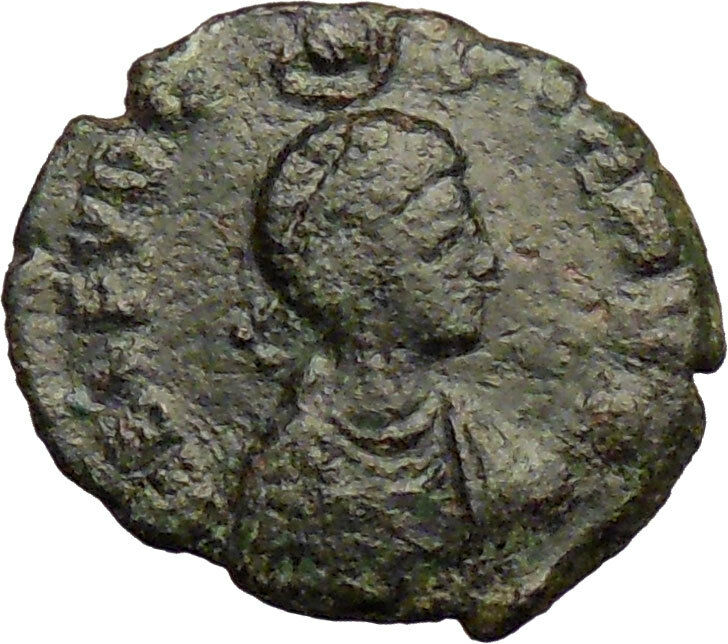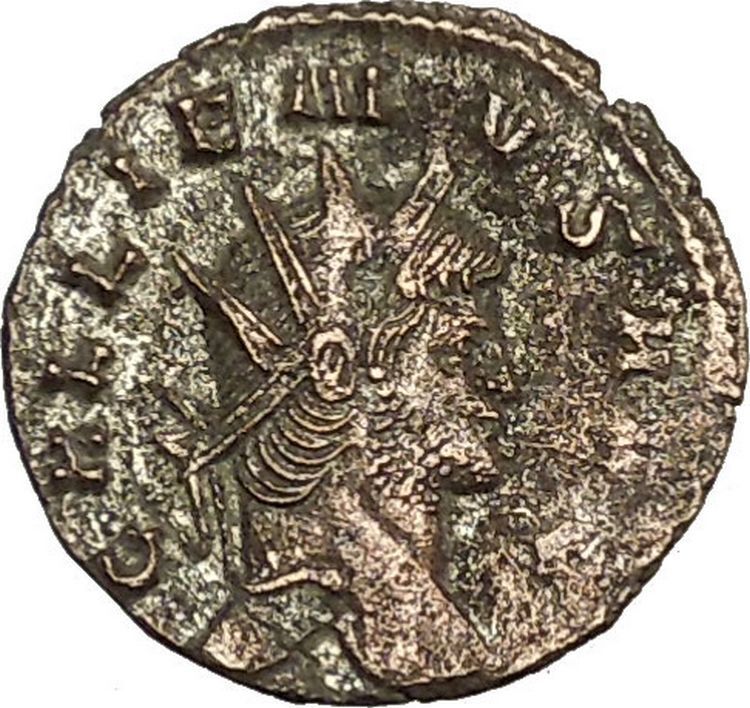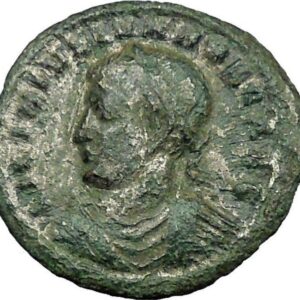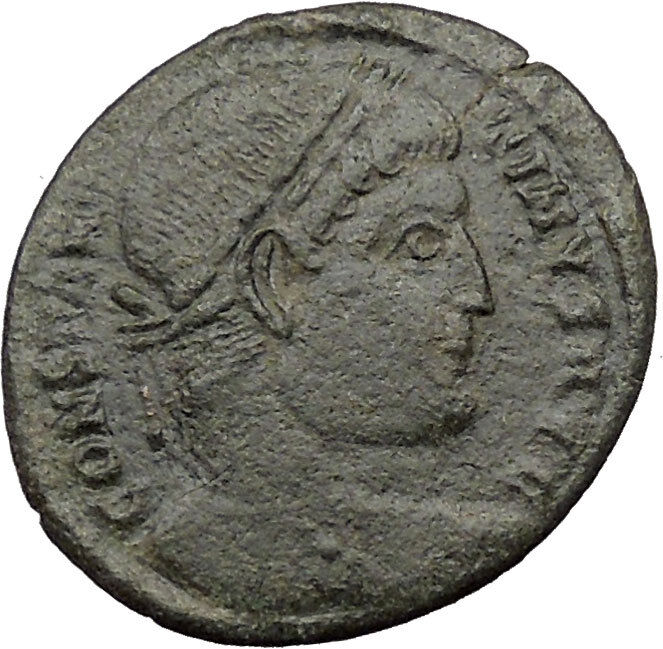|
Claudius II – Roman Emperor: 268-270 A.D.
Bronze Antoninianus 20mm (3.64 grams)
Struck at the mint of Rome 268-270 A.D.
Reference: RIC 19f, C 22
IMPCLAVDIVSAVG – Radiate, cuirassed bust right.
ANNONAAVG – Annona standing left, holding grain ears over modius and cornucopia.
You are bidding on the exact item pictured,
provided with a Certificate of Authenticity and Lifetime Guarantee of
Authenticity.
In
ancient Roman religion, Annona (from
Latin annus, year is the divine
personification of the
grain supply to the city of Rome. She is
closely connected to the goddess
Ceres, with whom she is often depicted in
art.
Annona, often as Annona
Augusti, was a creation of
Imperial religious propaganda, manifested in
iconography and cult practice. She is presented
as an
epiphany of the
emperor’s power to care for his people through
the provision of grain. Annona thus lacked
narrative mythology or a
tradition of devotion in the
Roman Republic, but once established as part of
Imperial cult, she was the recipient of
dedications and votive offerings from private
individuals motivated by gratitude or the seeking of favor.
Imperial cult
In the propaganda of
Claudius, the cult of Ceres Augusta made
explicit the divine power that lay in the Imperial provision of the annona,
the grain supply to the city. Annona Augusti appears on
coins late in the reign of
Nero, when the Cult of Virtues came into prominence in the wake of
the
Pisonian conspiracy. She embodied two of the
material benefits of
Imperial rule, along with Securitas Augusti,
“Augustan Security,” and often appeared as part of a pair with Ceres. On
Neronian coinage, Ceres, Annona, and
Abundantia (“Abundance”) were closely
associated.
Annona also appears on coins issued under
Vespasian, where along with other Virtues she
represents the restoration of confidence in the
principate, and on the coinage of
Titus,
Domitian,
Trajan,
Hadrian,
Antoninus Pius, and
Septimius Severus. She was a particular
favorite in Trajan’s propaganda, which sought to portray his reign as a renewal
and a prosperous new era for mankind; hence Annona often appears with a symbolic
child. In the context of Trajanic politics, Annona represented Rome’s grain
independence from its traditional supplier
Egypt.
Iconography
Annona is typically depicted with a
cornucopia (horn of plenty) in her arm, and a
ship’s prow in the background, alluding to the transport of grain into the
harbor of Rome. On coins, she frequently stands between a
modius (grain-measure) and the prow of a
galley, with ears of grain in one hand and a
cornucopia in the other; sometimes she holds a
rudder or an
anchor
Claudius III (Latin:
Marcus Aurelius Valerius Claudius Augustus;
May 10, 213 – January 270), commonly known as Claudius Gothicus, was
Roman Emperor from 268 to 270. During his reign
he fought successfully against the
Alamanni and scored a crushing victory against
the
Goths at the
Battle of Naissus. He died after succumbing to
a
plague (perhaps smallpox) that ravaged the
provinces of the Empire.
Life
Origin and rise to
power
Claudius’ origin is uncertain. Born on May 10, 213, he was either from
Sirmium in
Pannonia Inferior or from
Naissus
Dardania (in
Moesia Superior).
Claudius had served with the Roman army for all his adult life, making his
way up the military hierarchy until the Emperor
Gallienus made him the commander of his elite
cavalry force (hipparchos) and
subsequently his military deputy.In September 268 he found himself assigned as a
military tribune with the Imperial Army besieging the usurper
Aureolus in
Milan. His troops then proclaimed him Emperor
amid charges, never proven, that he murdered his predecessor
Gallienus. However, he soon proved to be less
than bloodthirsty, as he asked the
Roman Senate to spare the lives of
Gallienus’ family and supporters. He was less
magnanimous toward Rome’s enemies, however, and it was to this that he owed his
popularity.It is possible Claudius gained his position and the respect of the
soldiers by being physically strong and especially cruel. A legend tells of
Claudius knocking out a horse’s teeth with one punch. When Claudius performed as
a wrestler in the 250s, he supposedly knocked out the teeth of his opponent when
his genitalia had been grabbed in the match.
|








